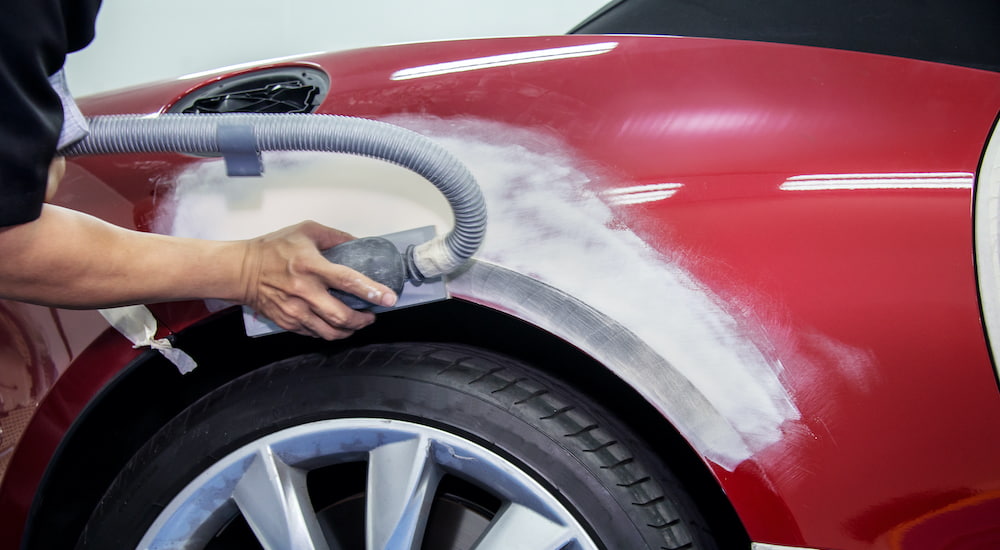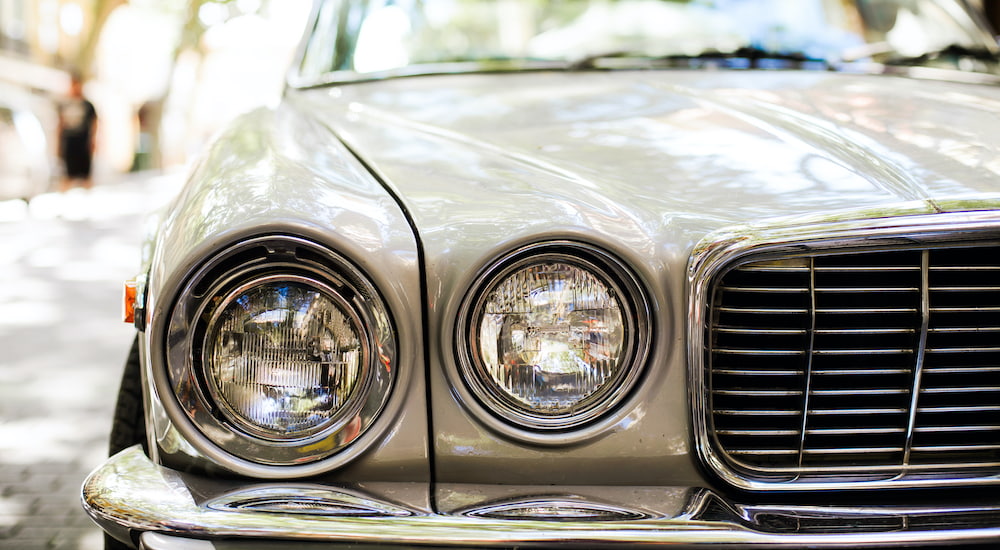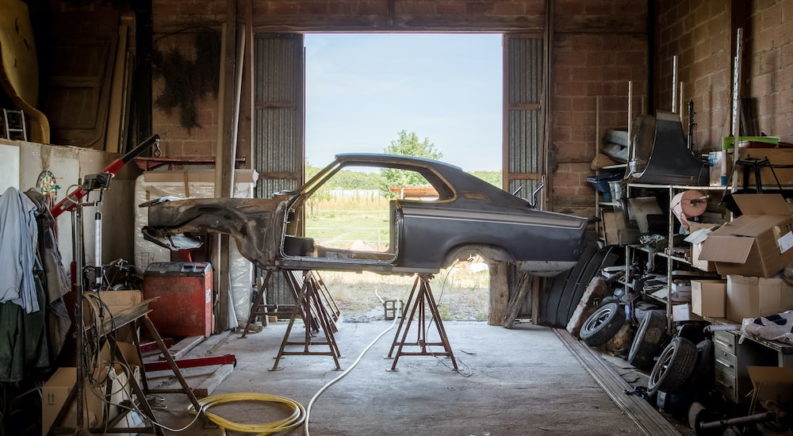If you like old cars – whether “old” means a 1940 Ford Flathead, a 1969 Dodge Charger, or a 1993 Mazda RX-7 – then you may have discovered that finding one of these vehicles that’s still in good shape is easier said than done. When faced with the dilemma of wanting to own one of your favorite old cars but not being able to find or afford a pristine example, then your thoughts might have wandered to getting a good deal on a fixer-up and then restoring it to running condition yourself. However, before you dive into your very own DIY vehicle restoration project, there are three things that you should know.
1 – Restoring a Car Takes Time
If you think that finding an old car and restoring it will be a fun side project that you can do in a few months – maybe over the winter, so you can drive it the next summer – think again. There are many levels of restoration, and making a few fixes to a car that is otherwise in good condition may not take long, but a serious restoration project will take thousands of hours of labor. And that’s if you know what you are doing. If you are new to restoring cars (and if you aren’t, why are you reading this?), then it will take even longer as you learn new skills, make mistakes, and hit dead ends.
Restoring a car is something that needs to be done right, and doing it right takes time. Sure, you could just slap a new coat of paint over those rust spots and do your best to ignore the unsettling sounds coming from the suspension, but half-hearted restoration jobs just mean more work down the road and can result in long-term damage to the vehicle and its value. A proper restoration means going over every inch of the car, tearing it down to its component parts, and rebuilding it from the ground up to ensure that everything is as close to perfect as humanly possible.
The good news is that while your restoration project may take years and feel more like a part-time job than a fun hobby, the payoff is well worth it. Not only is the end result a beautiful vehicle that you can enjoy driving for years to come, but you can also take pride in the skills you’ve gained and the memories that you have made. You will be able to point to every part of the car and tell a story about it, from the bodywork that you spent hours sanding and painting to the new old stock factory parts that you spent months tracking down.
2 – Restoring a Car Takes Money
Now you may be the type of person that hates having free time and always needs to keep yourself occupied with your latest project. However, even if you think you have the time and dedication needed to see a vehicle restoration project through to the end, time alone is not enough. Restorations require money and lots of it. Even if you score a screaming deal on the car itself and have the skills to do all the work yourself, you will quickly find the bills piling up as you begin purchasing the parts and tools you need to get the job done.
However, spending peanuts to get the car you want and being able to do all the work yourself is very much the exception rather than the rule. Most old cars represent a significant investment even if they aren’t in the best condition, and even the most mechanically inclined will almost certainly find that some parts of the restoration project are simply beyond your abilities or comfort zone. The older the car in question, the more likely you are to encounter problems that require extremely specialized expertise to solve. Expect that you will need to bring in an expert at some point in the project and budget accordingly.
If you are considering a restoration project not as a way to get a fun car but as a way to make money, then you will probably be disappointed. Although there are some particularly rare cars where a well-done restoration can turn a profit, the vast majority of these projects will wind up deep in the red even before you calculate the value of the labor you have invested. If you want to supplement your income, go get a part-time job flipping burgers or welcoming Walmart customers – it will be far more profitable than restoring old cars.
3 – Restoring a Car Takes Tools
Part of the reason why vehicle restorations are so expensive is because of all the tools you need to do them properly. We’re not talking about a few odd socket sizes and some new wrenches; we’re talking about highly specialized tools that you will likely only use once unless you decide to embark on another restoration project in the future. This is particularly true if we are talking about older cars – you might not need anything out of the ordinary to restore that A80 Supra you found a good deal on, but that 1920s Chrysler Imperial? That’s going to take some specialty equipment.
Even if you aren’t working on anything too exotic, restoration is more involved than simple maintenance and will require purchasing more tools. How many of you shade tree mechanics have a garage equipped with an engine hoist and test stand, paint booth, and bodywork equipment? Buying all that equipment represents a significant investment, and the only alternative is taking the car to a professional shop experienced in car restorations, which will cost even more. The best-case scenario when embarking on a vehicle restoration is to find some friends who can lend you tools. It’s never a bad idea to look for someone else setting out on a similar restoration project in your area so you can pool your resources and give each other a hand.
Finally, you will need to consider your workspace – you can’t exactly strip your project car down to the bare frame in your driveway and leave it exposed to the elements. You need a garage, and it needs to be big enough to accommodate the car and any disassembled parts while still giving you room to work. The “disassembled parts” bit is important to remember – after you’ve torn the car down to get to work, it is going to occupy far more space than it did when it was still all in one piece. You also need to make sure that you have a way to keep all the small parts safe and clearly organized – there is nothing worse than resembling your car and realizing you have no idea where you put an important part.

Have We Scared You Off Yet?
After reading all of that, you might just be thinking about dropping the idea of ever trying a vehicle restoration and planning on just buying yourself a nice model of your dream car instead. While buying model cars is never a bad thing, we don’t want to discourage you from your restoration project. We just want to make sure that you are jumping into it with both eyes open and a clear understanding that it will be a major undertaking that will consume time and money. If you plan and budget accordingly, a vehicle restoration can be an incredibly rewarding experience that you will look back on fondly as you cruise down the road in your restored car (even if you were cursing yourself for ever considering it when you were knee deep in old car parts encountering yet another unexpected setback).
What You Need To Know
Now that you have an idea of what you are getting into, it is time to give you some tips to keep in mind when embarking on your vehicle restoration journey. Every restoration project is unique, and working on a 1977 Pontiac Trans Am is going to be a different experience than fixing up a 1977 MG MGB, even if they were built in the same year. However, there are some things that will remain constant no matter what car you are planning to restore. From getting started to the end of the project, here are three useful tips that can save you some headache down the road.
1 – Choose Your Car Carefully
The most important part of your restoration project is the vehicle, so take your time before settling on the right car. Remember that this project is going to be expensive, so don’t be focused on getting a good deal – especially since most of the “good deals” out there will turn out to be anything but once you start taking the car apart. The single most important thing is choosing a car that you love and that you will be happy investing an excessive amount of time and money restoring. It is never worth settling for a car that you don’t want just to save a few thousand dollars – that’s a recipe for a project that you find yourself giving up on halfway through.
However, also make a frank evaluation of your budget, skills, and resources. The older and rarer the car, the more expensive and difficult it will be to acquire and work on. Make sure your goals are attainable – if they aren’t, consider either attempting a more realistic project or figuring out how to make your dream restoration a possibility. If that means putting off your restoration for a few years until you have the money, time, or knowledge needed to make the project a success, don’t worry. Unless you are looking at a truly one-of-a-kind vehicle, you will be able to find another example when you are ready.
Once you know what type of car you want, spend your time making sure you find an example in good condition. Talk to the current owner about their history with the car, how long they have owned it, and what work they have done to it. Get a feel for why they are selling it – did they get started on their own restoration project and then realized the car had more issues than they expected? Was the vehicle damaged in some way? Buying any used car requires doing your due diligence, but buying a project car requires cranking things up to 11 to make sure you get what you want.
2 – Find Some Professionals
If you want to do every single aspect of the restoration yourself, go for it! But more likely than not, it will make more sense to turn to the professionals for certain tasks. Whether that means rebuilding the motor, hand stitching the upholstery, or applying car-show-ready paint when the restoration is complete, knowing that you have a professional that you can turn to can take a lot of stress out of vehicle restoration. The good news is that there are reputable professional shops that specialize in restoration work all over the country. Old cars are big business, and a little research should be able to turn up some local shops that can help you out on the toughest tasks.
However, choosing the right professional can be a job in itself. You never want to simply go to the first shop you find and give them your car – you might get lucky and happen across the best shop in the area, or you might get unlucky and give your prized car to a hack who doesn’t know what he is doing. Take your time, ask other enthusiasts in your area, and visit the shops you are considering to talk to them in person. Vehicle restoration is specialized work, and the real experts will be knowledgeable and enthusiastic. A good shop will work with you to figure out the best course of action for your project, not just ask for your money.
If you do choose to work with a professional to make your automotive dream a reality, carefully consider exactly what you need professional help with and what you can handle yourself. This will depend on your skills and resources, but the more work you do yourself, the more money you will save (and the more pride you will feel when the project is complete). Even if all you can do is disassemble the car and take the important parts to professionals, doing so can result in significant savings over simply dropping the entire car off at their shop.
3 – Decide On Your Goals
Settling on concrete goals ahead of time is an easy step to forget about – afterall, the goal is a running car, right? The problem is that a running car means a lot of different things to different people. Do you simply want something that looks good and that you can take for a spin every once in a while? Do you want to recreate a car that appeared in your favorite movie or TV show? Or do you want a museum-grade restoration that you can proudly show off at national car shows? Those are just a few of the possibilities, and they even leave out a lot of the specifics.
Deciding on goals means setting out exactly what you are trying to accomplish ahead of time and is critical to keeping things on track over what can become a multi-year project. As you work on your car, you will be faced with countless decisions that need to be made – should you use reproduction parts or search for new old stock? Should you update the brakes and engine for greater performance? Should you change the interior or exterior looks of the car? Having a clear roadmap for your restoration project makes answering these questions easier and will result in a better final product.

Are You Ready to Begin?
Getting started on your first vehicle restoration project is a major undertaking, even if you have plenty of experience working on your cars. However, it is also one of the most rewarding experiences for any car enthusiast. By the time you have finished, you will have gained a new level of expertise, and you will have a car that you know is truly one of a kind. Not only will you have touched every single nut and bolt on the vehicle, but your car will be a running embodiment of your craftsmanship. Sure, you might just cringe inside every time you see an imperfection in your work, but the car will be a part of you in a way that no other vehicle has ever been.

